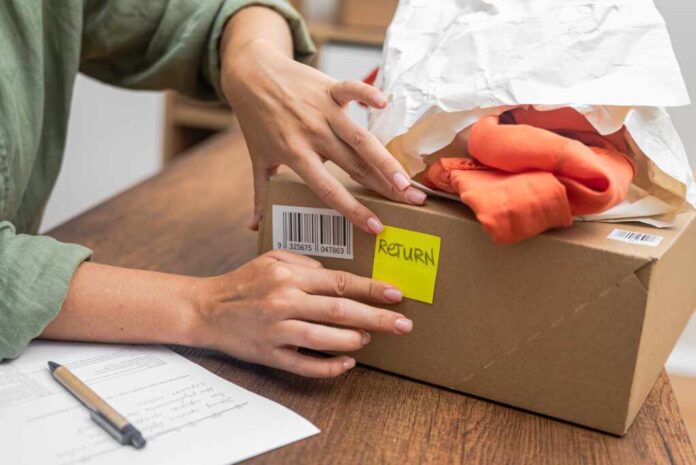
Retailers throughout the United States have been faced with post-holiday disappointments as they discover a surge of counterfeit items, forged receipts, or severely damaged products being returned by customers who anticipate full refunds for premium goods.
In certain instances, when processing television returns, retailers have uncovered boxes containing bricks or pilfered merchandise instead of the expected electronics.
According to the National Retail Federation (NRF), fraudulent returns of merchandise in the United States reached an estimated total of over $101 billion in 2023. This constitutes approximately 14% of the total returned items that retailers handled last year, and it is more than double the amount recorded in 2020, as reported by the NRF in a recent study. For every $100 worth of returned goods, retailers are facing a loss of $13.70 due to return fraud.
NRF Executive Director of Research Mark Mathews commented, “Retailers continue to test and implement new ways to minimize losses from returns, particularly those that are fraudulent, while at the same time optimizing the shopping experience for their customers. Retailers’ efforts include providing greater detailed descriptions on sizing and fit of products for online purchases and requiring a receipt with returned items. As a whole, the industry is prioritizing efforts to reduce the amount of merchandise returned in stores and online.”
The influx of returns has been eroding profit margins and has the potential to push certain businesses into financial losses.
Retailers facing unprecedented wave of fraudulent holiday returns https://t.co/YzZu65dHYz https://t.co/YzZu65dHYz
— Washington Examiner (@dcexaminer) January 11, 2024
Industry specialist Tom Enright said, “We’re headed for a trillion-dollar problem here.”
Enright informed the Wall Street Journal that an increasing number of individuals have been attempting to exploit the system, with the expectation that a returned shipping label, scanned by a postal carrier, will result in a refund before the retailer can verify the accurate return of the item.
The most prevalent form of return fraud, as highlighted by the NRF, is known as “wardrobing.” This occurs when a customer returns clothing that has been worn, damaged or stained, with these flaws not present at the time of purchase.
In a survey conducted by returns technology firm Optoro in November, it was discovered that over one-third of shoppers confessed to embellishing or exaggerating the reasons for their returns to avoid fees or secure refunds. The survey involved more than 1,000 adult consumers. Among those surveyed, 30% acknowledged practicing wardrobing, with 43% admitting to doing it a few times annually and 23% confessing to this behavior at least once a month. Interestingly, the survey also revealed that 40% of shoppers aged 18-29 were the most likely to engage in wardrobing.
Another prevalent form of fraud involves switching higher-priced tags onto lower-cost items.
Retailers have been taking measures to combat this issue, encouraging customers to bring their returns to physical stores where they can be promptly inspected. In-store returns also enable retailers to monitor individuals who might be exploiting their return policies.

































